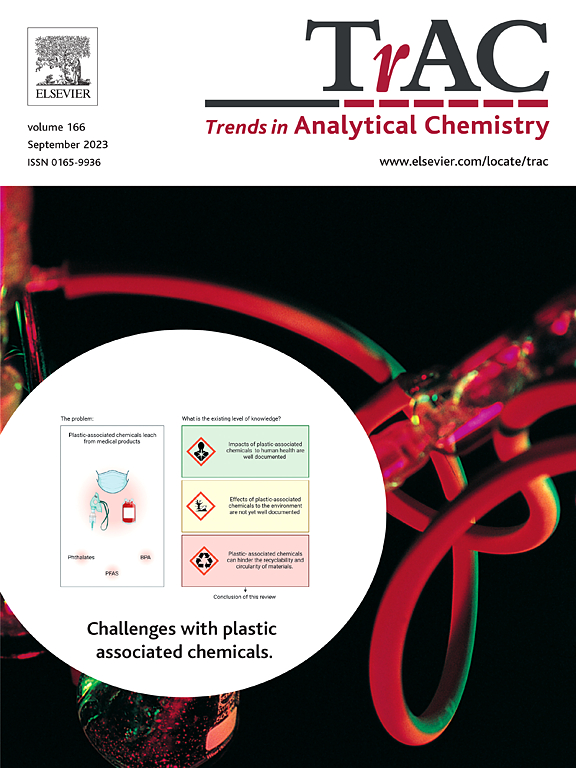Hydroxyapatite-based composites as efficient sorbents: Fabrication and application in sample preparation techniques
IF 11.8
1区 化学
Q1 CHEMISTRY, ANALYTICAL
引用次数: 0
Abstract
Hydroxyapatite (HAP) and its composites, especially in nano-scale forms, have garnered significant interest among researchers owing to their remarkable characteristics. These features include a flexible pore structure, substantial specific surface area, high porosity, robust stability, and alterable surface properties. Recently, HAP and its composites extensively utilized in various interdisciplinary fields such as environmental science, biomedical, and materials science. In this way, novel sample preparation methods based on nano-HAP (n-HAP) have been developed. This article provides an overview of the different synthesis methods of the n-HAP materials, the commonly used techniques for their characterization, the types and properties of their nanocomposites, green and sustainability aspects of them, and their applications in sample preparation techniques including; Solid Phase Extraction (SPE), Dispersive Solid Phase Extraction (DSPE), Magnetic Solid Phase Extraction (MSPE), Solid Phase Microextraction (SPME), Needle Trap Devices (NTDs), and Microextraction by Packed Sorbent (MEPS). This review covers published documents since 2000 in the field of HAP-based adsorbents for sample preparation techniques. Additionally, the article discusses future prospects for these procedures.

求助全文
约1分钟内获得全文
求助全文
来源期刊

Trends in Analytical Chemistry
化学-分析化学
CiteScore
20.00
自引率
4.60%
发文量
257
审稿时长
3.4 months
期刊介绍:
TrAC publishes succinct and critical overviews of recent advancements in analytical chemistry, designed to assist analytical chemists and other users of analytical techniques. These reviews offer excellent, up-to-date, and timely coverage of various topics within analytical chemistry. Encompassing areas such as analytical instrumentation, biomedical analysis, biomolecular analysis, biosensors, chemical analysis, chemometrics, clinical chemistry, drug discovery, environmental analysis and monitoring, food analysis, forensic science, laboratory automation, materials science, metabolomics, pesticide-residue analysis, pharmaceutical analysis, proteomics, surface science, and water analysis and monitoring, these critical reviews provide comprehensive insights for practitioners in the field.
 求助内容:
求助内容: 应助结果提醒方式:
应助结果提醒方式:


